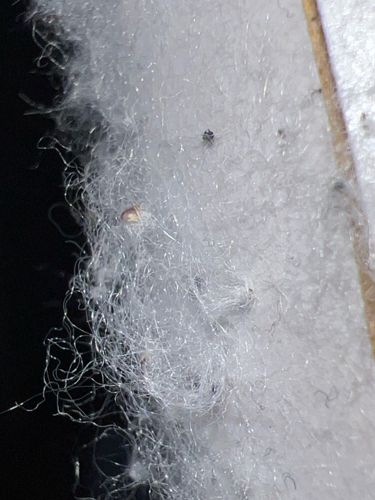Dust Mite
Scientific Name: Dermatophagoides spp.
Order & Family: Order Sarcoptiformes, Family Pyroglyphidae
Size: 0.2–0.3 mm (too small to be seen with the naked eye)

Natural Habitat
Indoor environments, particularly in bedding, upholstered furniture, carpets, and clothing where human skin flakes are abundant. They thrive in warm, humid conditions.
Diet & Feeding
Primarily feed on dead human and animal skin cells (dander), but also consume other microscopic organic debris.
Behavior Patterns
Dust mites are microscopic arachnids that are not parasitic, but rather scavengers. They reproduce rapidly, especially in favorable conditions, with a life cycle from egg to adult taking about 3-4 weeks. They do not drink water but absorb moisture from the air.
Risks & Benefits
Potential risks include being a major cause of allergies and asthma in humans due to their fecal matter and body fragments. These allergens can trigger allergic rhinitis, asthma symptoms, and eczema. There are no known direct benefits to humans; however, as detritivores, they contribute to the breakdown of organic matter.
Identified on: 10/22/2025